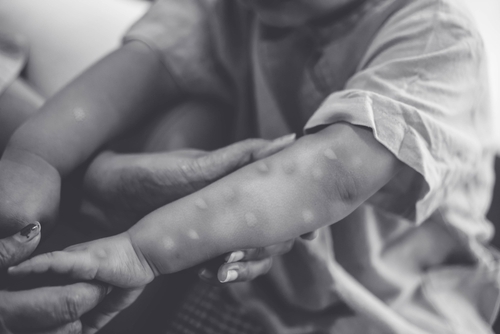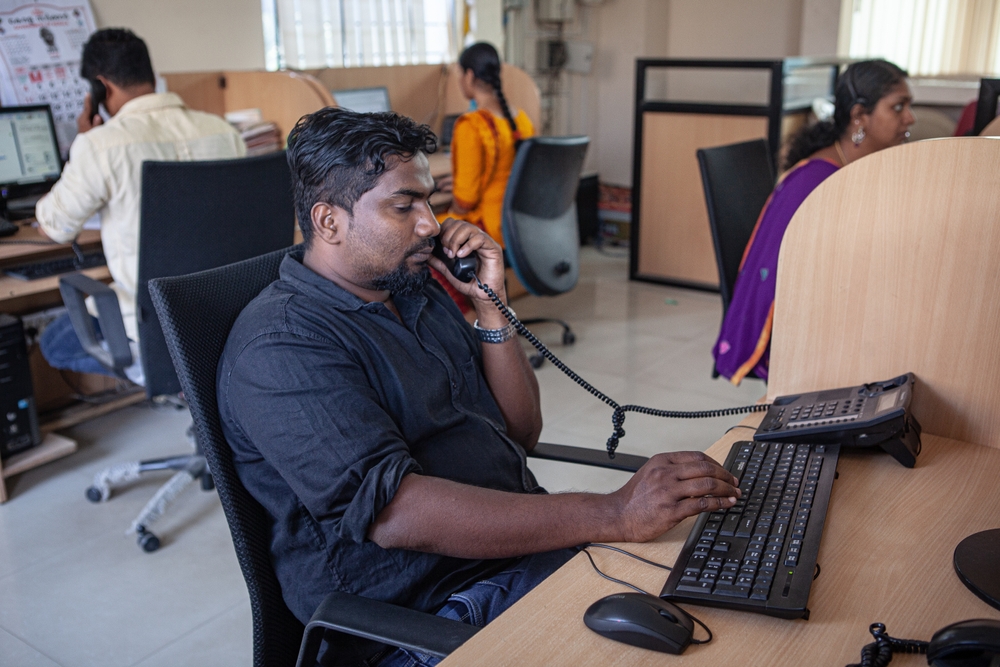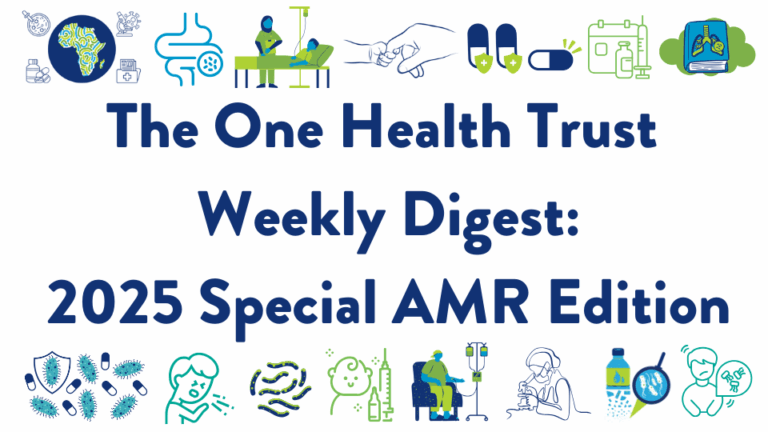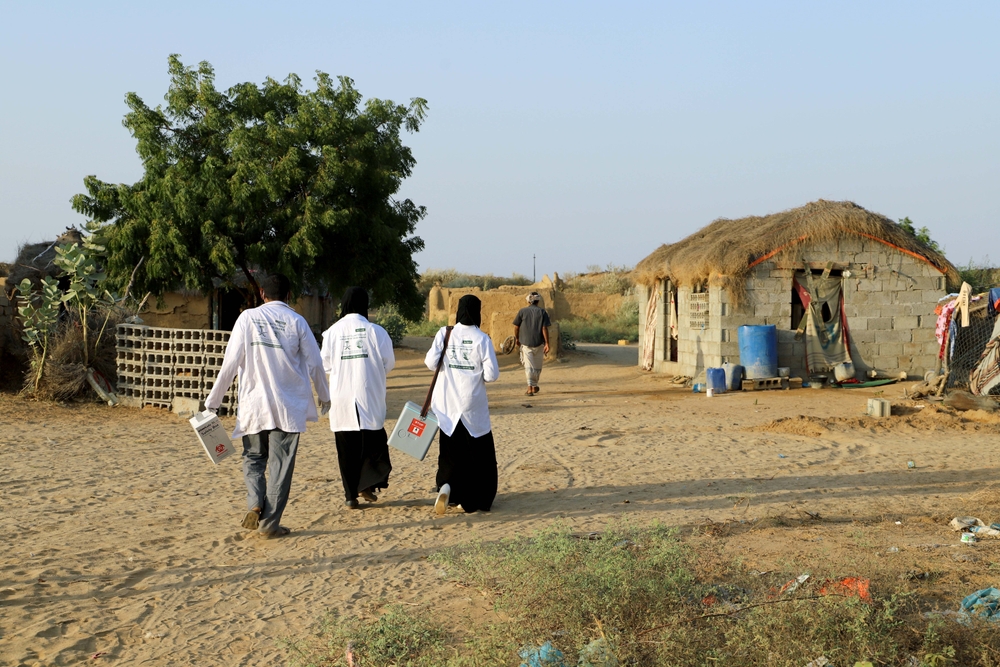August 19, 2024

Universal rotavirus vaccination is crucial for improving child health outcomes in India.
India’s rotavirus vaccination program was initiated in 2016. OHT researchers Eili Klein, Ramanan Laxminarayan, Arindam Nandi, and Chirag Kumar utilized a dynamic agent-based model calibrated with national–level data to assess the program’s impact on disease burden and antibiotic misuse among children under five. Despite widely heterogeneous subnational vaccination coverage, estimates suggest that the program led to a reduction in 33.7 percent of cases, 38.3 percent of deaths, and 21.8 percent of antibiotic misuse attributed to rotavirus infections. Furthermore, increasing vaccination coverage to 68 percent could decrease rotaviral prevalence among children to less than 1 case per 100,000, significantly reducing inappropriate antibiotic use. [Vaccine]
Proposed study protocol to explore the social dimensions of AMR
The One Health Trust’s Deepshikha Batheja and Ramanan Laxminarayan co-authored a study protocol, the Power Relations in Optimisation of Therapies and Equity in Access to Antibiotics (PROTEA) study, which will explore the intersection of power dynamics resulting from social constructs (such as race, gender, and class) with infection prevention and control (IPC) and antimicrobial resistance (AMR) in India and South Africa. These results will be used to optimize healthcare practices related to IPC and AMR, to expand equitable access to antibiotics and IPC practices. [Wellcome Open Research]
Children at higher risk of death from the new mpox variant
In a press release, UNICEF reports that the new mpox variant places children, especially those living through conflicts and displacement, at heightened risk of death from the disease. Estimates from the Democratic Republic of the Congo, currently experiencing the largest outbreak, show that children comprise 56 percent of the cases and 84 percent of the deaths in 2024. On August 13, the Africa Centres for Disease Control and Prevention declared mpox as a Public Health Emergency of Continental Security, and the World Health Organization declared the surge of cases in Africa and the rest of the world a Public Health Emergency of International Concern. [UNICEF]
Genotyping Salmonella typhi in a Kenyan informal settlement
Whole genome sequencing of 35 Salmonella typhi isolates from participants in the informal settlement of Mukuru, Nairobi, Kenya revealed close relatedness between antimicrobial-resistant cases and carrier isolates, indicating that carriers may play a role in the transmission and persistence of S. typhi in any given population. Furthermore, the isolates identified in this setting shared common lineages with strains from neighboring countries and India, suggesting the ongoing global spread of multidrug-resistant S. typhi. [BMC Infectious Diseases]
Highly resistant Klebsiella pneumoniae detected in wastewater effluent in Italy
An analysis of wastewater samples collected from an urban wastewater treatment plant (WWTP) in Italy revealed that nearly half of the Klebsiella pneumoniae strains detected in the effluent exhibited resistance to several antibiotics, suggesting the dissemination of antibiotic resistance genes in aquatic environments from WWTPs. Nearly all the isolates (40 out of 42) contained genes that confer polymyxin resistance, and eight strains were resistant to colistin, a last-resort antibiotic. [Environmental Pollution]
Assessing antimicrobial stewardship and use in hospitals in Sierra Leone
A cross-sectional study of children admitted to two hospitals in Sierra Leone found that neither hospital possessed sufficient antimicrobial stewardship infrastructure, policy, or monitoring tools to ensure appropriate antibiotic prescribing. The overall prevalence of antibiotic use was 84.7 percent and nearly 84 percent of children less than one year old received an antibiotic. Furthermore, male children were more likely to receive an antibiotic prescription than female children. [Antimicrobial Resistance & Infection Control]
Antimicrobial susceptibility testing methods for Clostridiodes difficile vary by location and species
A systematic scoping review found that AMR profiles of Clostridiodes difficile and minimum inhibitory concentrations for veterinary antibiotics vary widely by geographical region and animal species. Strategies for antimicrobial susceptibility testing (AST) also varied greatly, with the E-test (a method executed by placing a strip impregnated with antimicrobials onto an agar plate), being the most frequently utilized method. Future One Health work should focus on international collaboration and agreement upon a standardized AST strategy to characterize C. difficile resistance profiles. [One Health]
Increased contract governance can help curb antibiotic use on smallholder hog farms in China.
An analysis showed that contract governance between farmers and cooperatives prevented antimicrobial overuse in small hog farms in China and reduced the amount spent on antimicrobials by each household by 118 Yuan. The cooperative supervision, technical guidance, and product premium perception mechanisms of contract governance accounted for 19.94, 27.90, and 26.93 percent of the total impact, respectively. These results support the strengthening of contract signing and execution between smallholder farmers and cooperatives to minimize the risk of AMR in the absence of governmental supervision. [One Health]
Bangladesh on track to meet goal of zero rabies deaths by 2030
In 2011, Bangladesh launched the National Rabies Elimination Programme, which included a mass dog vaccination (MDV) campaign that led to the vaccination of an average of 21,295 dogs in each district per year. Based on the observed trend of declining human rabies cases with slight seasonality between 2006 and 2023, a time-series forecasting model predicted that Bangladesh could make significant strides towards their goal of zero rabies deaths by 2030 if the current downward trend in cases is maintained. [The Lancet Regional Health – Southeast Asia]
A call for integrated One Health surveillance for Rift Valley fever virus in Rwanda
In 2022, Rwanda confirmed its first human outbreak of Rift Valley fever virus (RVFV), a mosquito-borne arbovirus that can spread from infected animals or contaminated animal products to humans. Health authorities implemented a cross-sectoral One Health strategy that resulted in the containment of the outbreak by the end of July 2022. However, the observed high case fatality rate (13 percent) could be attributed to delayed case detection, underscoring the limitations of the existing passive RVFV surveillance system. [IJID One Health]
Providers’ perspectives on promoting HPV vaccination in the United States
A qualitative study of healthcare providers in the United States identified leveraging parental trust, promoting parental autonomy, and normalizing vaccination as strategies to address human papillomavirus (HPV) vaccine hesitancy among parents of children aged 10-17. Providers also noted that future interventions promoting HPV vaccination should be time-saving, leverage existing infrastructure (such as electronic medical systems), and not single out the HPV vaccine as different from other routine vaccines. [Vaccine: X]
Image from Shutterstock











